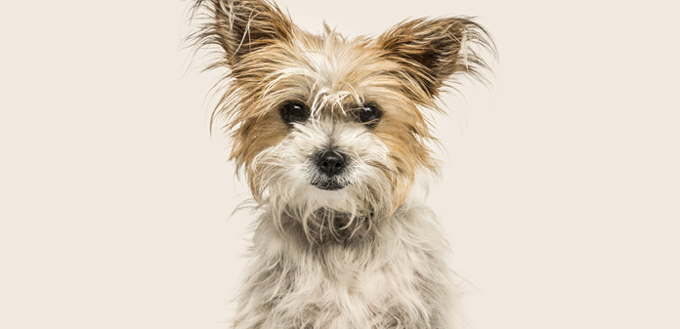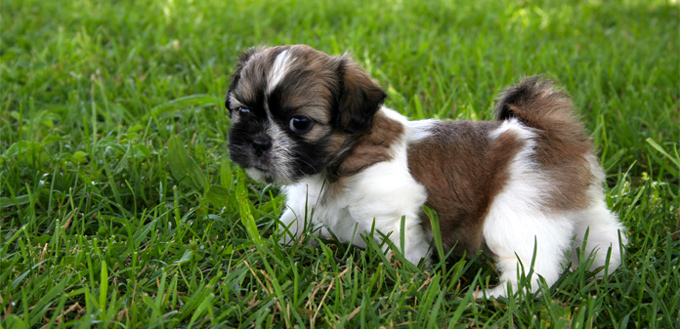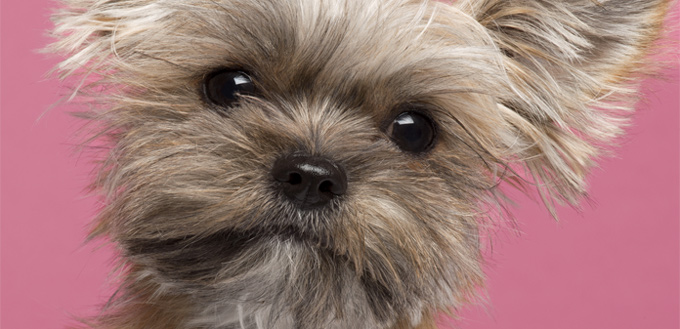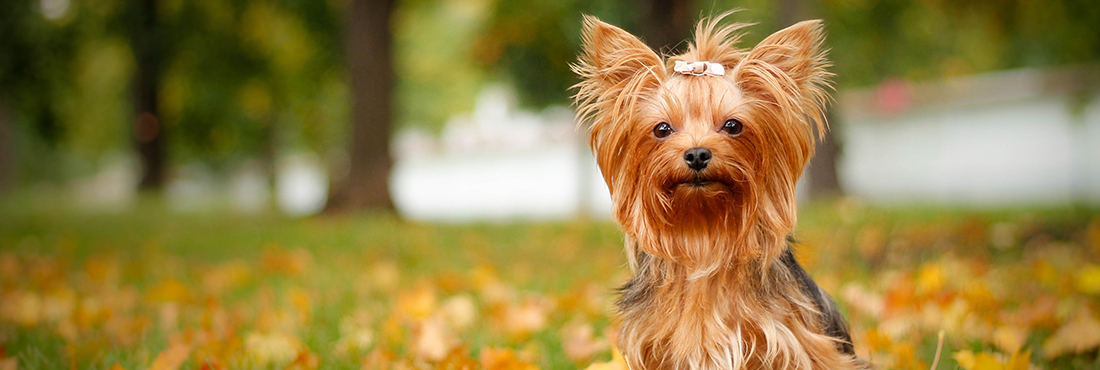If one has to combine the bold confidence of a royal and presidential toy dog breed with the affectionate and spunky nature of a member of the Chinese Imperial court you’d definitely get one of the cutest and most adorable lap dogs you can ever get. There’s only one problem: it’s a crossbreed. Regardless, with its bright wide eyes, admirable level of intelligence, and bubbly personality, who wouldn’t love a Shorkie or Shorkie Tzu or Yorkie Tzu? This cross between a regal Shih Tzu and a playful Yorkshire terrier plays to the greatest strengths of these two breeds. And if you’re currently considering adding a Shorkie to your growing pet family, this article is for you.
History of the Shorkie Tzu
Like all designer breeds, it is quite difficult to establish the origins of the Shorkie Tzu, although the common knowledge is that breeders in the US developed the hybrid in an effort to create a lovable yet smart and highly trainable pet that will someday become a purebred of its own. Additionally, while it is not known when exactly the first Shorkie appears, it is largely believed that the cross has been around for a few decades already. With that in mind, it should be a few more decades before the Shorkie Tzu can become a real purebred.
The idea of crossbreeding isn’t exactly a novelty. Different animals have been crossbred for centuries to bring about a new breed that carries both the strong points and the weak points of its parentage. Breeders, of course, would like more of the strong points to manifest and less of the weak points. As such, it usually takes many years of selective breeding before the truly desired characteristics of the so-called new breed will become uniform across members of that breed.
Crossing a Yorkie and a Shih Tzu is not really that difficult as both are relative of the same height, although the Yorkie is usually shorter by about an inch at the shoulder. It is also about two times lighter than the Shih Tzu. It is for this reason that the Shih Tzu be female and the Yorkie male when crossbreeding as doing the opposite may put a strain on the female Yorkie’s smaller uterus, not to mention the overall stress on its body.

Understanding the origins of the Shorkie requires an understanding of the origins of its parents. While the Yorkie Tzu is the result of crossing a Shih Tzu with a Yorkshire Terrier, it is important to understand that its genetic composition doesn’t always translate as a perfect 50-50 split. If one wants a really true Shorkie hybrid, then both parents should also be 100% purebred. That means both parents of both Shih Tzu and Yorkie are purebreds including their forebears. This is the only way one can achieve the hybridization that breeders look for.
Let’s say you have a Shih Tzu with 25% Maltese blood in it. When you crossbreed this with a purebred Yorkshire terrier the resulting Shorkie will be 50% Yorkie, 37.5% Shih Tzu, and 12.5% Maltese. That is why it is imperative for breeders of designer breeds to carefully select their dogs to make sure that they have 100% purebred in their hands. This means that the dog’s ancestors are really 100% Shih Tzus or Yorkies.
Who are the Parents?
Since everything about the Shorkie Tzu is dependent on the genetic information passed down by their parents during the union, it is crucial to understand how the parents are in the first place.
Shih Tzu
Clever and intelligent yet has a very stubborn streak to it the Shih Tzu is one of those lap dogs that are a clear winner in dog shows especially when handled by a professional. They’re lively and independent, playful and alert, friendly and loyal dogs, outgoing and spunky, and affectionate and gentle at the same time. When groomed for a show they can really be magnificent to look at. It’s no wonder that members of the Chinese Imperial court never wanted these dogs out of their sight. They’re cherished more like royal escorts that they cannot be sold, traded, or even given away as gifts. In the eyes of the ancient Shih Tzu, it is as important as the Emperor and His court itself.
Anthropologists who study the close relationship between man and his best friend put the Shih Tzu to the wolves of the north. An analysis of the DNA of Shih Tzus places the breed to be a descendant of Kitchen Midden Dogs that branched into two distinct groups. One of these included the long-haired Chihuahua and the Papillon while the other included the Shih Tzu and the Pug. The earliest known record of the Shih Tzu is in 800 BC China where it was known as the “Lion Dog”.
There are other theories that have been forwarded related to the origins of the Shih Tzu. The most prominent of these is that the breed is actually a cross between a Lhasa Apso and a Pekingese, breeds that are also highly valued in the Imperial court. It was only in the 1930s when the very first Shih Tzus found their way into Norway and England and was classified as “Apsos” by the Kennel Clubs of these countries. It was in 1934 when the Shih Tzu became officially known as such, “Shih Tzu”, with the establishment of the Shih Tzu Club of England.
Today, the Shih Tzu remains a very popular breed of choice among pet parents who require a fancy toy dog, smart and regal in every way. It has consistently ranked in the Top 20 of the world’s kennel organizations.
The Imperial Shih Tzu is not without any health concerns, however. It is quite prone to thyroid gland disorders especially hypothyroidism that usually strikes middle-aged dogs. It is also prone to intervertebral disk disease which is also shared with the Welsh corgi, the Basset hound, the French bulldog, and the Beagle. It’s got a snub nose so breathing problems and eye issues are quite common.
On average, a Shih Tzu can grow anywhere between 9 and 16 pounds as well as 9 to 10 inches tall when measured at the shoulders. And despite its many health problems, when cared for the correct way the Shih Tzu can last up to 16 years with 10 being the minimum.
Yorkshire Terrier
While the Shih Tzu was bred especially for the royalty, the Yorkshire terrier was bred specifically to become ratters. They helped Scottish weavers drive away rats and rodents from woolen mills. It is their bold nature and small size that made them perfect for such a job. And the Yorkie is highly regarded for it.
The Yorkie is a descendant of the Black-Tan terrier and the Clydesdale terrier, a long-extinct breed. Scottish weavers brought their terriers with them to Leeds, Manchester, and York, eventually cross-breeding them with dogs in the locality. However, there are theories that the Yorkie is actually a mix of a Maltese, a Paisley terrier, and a Scotch terrier. Whatever the case, the early days of the Yorkie were wrought with confusion as there were at least 3 types of Yorkies by the mid-19th century: the Yorkshire terrier, the broken-haired Scotch terrier, and the rough and broken-coated terrier.
It was in the 1860s that Huddersfield Ben provided the genetic blueprint of the now-popular Paisley-type Yorkie. Ben was owned by Mary Ann Foster who lived in Yorkshire and laid the foundation for the definition of the modern breed like the Yorkshire terrier. Huddersfield Ben was well-revered and is considered the father of the breed. He wowed everyone at dog shows and almost everybody wanted their pets to be like Ben.
Today, the Yorkie ranks number 6 on AKC’s list of most popular dog breeds and consistently ranks in the top 10 of world kennel club rankings.
With its straight and silky, fine, and glossy hair, it’s not surprising why a lot of folks love the Yorkie. While it has a long downy coat, it’s one of those furry breeds that you can actually bring home to a family with an allergic member.
It’s small, but don’t ever question the confidence and courage of a Yorkie; otherwise, you clearly haven’t read about Smoky, the most famous Yorkie of the Second World War. The little hound was never officially enlisted as a war dog, having been discovered in an abandoned foxhole in New Guinea. Smoky even has a life-sized bronze sculpture mounted on a 2-ton blue granite base at the Cleveland Metroparks in Lakewood, Ohio. This 4-pound bundle of joy was worth 4 tons of bravery and courage that memorials were dedicated specifically for this Yorkie’s deeds.
But if you think Smoky is just another accidental war hero, you’ve got one coming. This lovable hound, once called a rat’s worst enemy, has found a new calling: comforting the wounded and the ill in the war. Smoky is recognized as the first-ever therapy dog that served a full 12 years both during and immediately after the war.
Smoky’s bravery, courage, boldness, intelligence, and extreme loyalty to its human friend underscore just how much the breed has grown from being mere ratters in old woolen mills of the English countryside. They’re the epitome of courage not being measured in size, but rather in the size of one’s heart and dedication.
On average, a Yorkie can grow about 4 to 6 pounds and about 8 to 9 inches tall at the shoulder. They’re emotionally secure and mentally sound, but only when trained and socialized early on. They may be great with kids, but owing to their size, only a kid who’s at least 8 years old should handle or make a Yorkie a pet.
With the exception of Smoky and a handful of other Yorkies, this breed is well-known for developing bronchitis, cataracts, lymphangiectasia, gastrointestinal problems, Legg-Calve-Perthes syndrome, and luxating patellas, among others. Dental problems are also quite common.
The Shorkie can exhibit most if not all of these traits from its parents. It is, thus, wise to make sure that you get a Yorkie Tzu from a reputable breeder and that you can personally inspect, observe, and assess for yourself its parents for their temperament and any health issues.

Quick Facts
Adorable, witty, and a real bundle of joy, the Shorkie can truly make for a fascinating pet. However, since it is not really purebred just yet, there may be variations in the characteristics that your Yorkie Tzu may have. Ideally, however, they should have the following characteristics.
- Shorkie Tzus typically start at about 4 inches at age 6 months before reaching their full adult height of about 8 inches by the age of 18 months, although it is possible that some may reach 14 inches in height.
- Yorkie Tzus can weigh anywhere between 6 to 8 and 15 to 16 pounds. Both the height and weight are not really that very dissimilar from both parents as the Yorkie and Shih Tzu are considered as toy dogs.
- Shorkies can live anywhere between 12 and 15 years.
- They need at least 30 minutes of exercise every day or at least 4 miles of casual walks accumulated in one week.
- They have medium levels of physical activity; running around and inside the house, for at least 30 minutes every day should suffice.
- Shorkies can have a range of colors for their coat. It can be in solid colors or a mixture of different colors that can include blue, black, white, red, brown, and fawn.
- Unless groomed, the Shorkie will usually have a long, straight, and silky smooth coat that is average in density. It is not known if it is hypoallergenic, although the Yorkie is known as such. Regardless, the Shorkie Tzu will require daily brushing to maintain the health of its coat.
Again, the variability in these traits can be traced to the fact that you’ve got two different breeds blending their individual traits into a single dog. For now, there’s really no way we can tell with absolute certainty that your Shorkie will conform to these ‘general observations’.
You may also like our breed guide on the Morkie (Maltese Yorkie Mix).
Things You Should Know
Owning a Shorkie Tzu is just like bringing home any other dog, purebred or otherwise. There are just some things that you’d have to know beforehand. Here are some of the more crucial things you need to know about this designer breed.
Training
All dogs require training the moment they reach our homes; Shorkies included. While some pet parents, especially newbies, think that training is no longer needed owing to the intelligent and smart nature of the parents of a Shorkie, this dog will still require direction especially in the use of its skills. The good news is that the Shorkie can be quite easy to train, but only if you know how to apply the fundamental principles of canine training. If not, then you’ll find the inborn stubbornness of both the Yorkie and Shih Tzu to be more than you can handle.
Housebreaking is often an issue among pet parents. However, if you can adhere to some basic guidelines and if you can housetrain your Shorkie the moment it comes into your household everything should be fine.
Feeding
Owing to their small mouths, you should be quite picky when it comes to their food. If you go dry dog food, then choosing a product that has smaller kibbles should work best as this will work out to their advantage. If you’ve got the dough for it, canned or wet dog food is better since it provides more proteins on a per weight basis than dry dog food. But if you really want to give your small hound the best, feed it raw and you’d be blessed with a happy canine friend. You may find some really great options in our guides to some of the best Yorkie foods, and also Shih Tzu foods.
Exercise
Both Shih Tzu and Yorkie are very energetic and playful breeds. It goes without saying that their offspring will be quite a bouncy and active hound, too. However, unlike large working dogs, 30 minutes of daily exercise is all they need to make sure that their muscles stay healthy and strong and that their joints are in their optimum range of motion. You don’t even need to bring them out to the park anymore since 30 minutes of vigorous playtime right inside your home is often enough.
However, short walks at the park especially at the dog park should give them the chance to explore their world and socialize with other people and other pets as well. Walking the Shorkie for a minimum distance of about 4 miles every week should suffice. You can break down this 4-mile requirement into about 1,000 yards per day and you’re on your way to a happier pet.
Socialization
Shorkies love the attention they receive either from being cuddled, hugged, or even the moments people play with them. They are very affectionate to their owners, including children. However, because of their size, it is not often recommended that a very young child pet a Shorkie.
Regardless, early socialization is a must for a Shorkie to grow into a well-balanced dog where it can mingle with other people, other dogs, and other pets quite easily. Puppy kindergarten classes almost always help.
Grooming
Shorkies require the regular daily brushing of their coats to maintain their silky smoothness; lest, you court tangles and mats. If you can keep up with this, then the Shorkie can be a real show dog. However, there is a more important issue when it comes to grooming. Yorkies are well-known for developing dental problems. As such, it is also highly possible that a Yorkie Tzu will have the same problems; hence, frequent toothbrushing is recommended. This should go hand in hand with regular trimming of the nails and cleaning of the ears.
Health
Health-wise, the Shorkie inherits most of the conditions associated with small breeds. Shorkies are especially prone to hypoglycemia and collapsed trachea. Most may also suffer from progressive retinal atrophy and patellar luxation as well as allergies. Depending on the more dominant trait in the Shorkie, the existing health conditions of either Shih Tzu or Yorkie or even both can also manifest on the young Shorkie.
The Shorkie Tzu is a great pet even for first-time pet parents. However, there are certain characteristics of pet owners that it is especially suited for. These include the following.
- Can devote at least 30 minutes of quality time for pet socialization, exercise, and playtime on a daily basis
- Has a basic understanding of how to carry out rewards-based canine obedience training
- Doesn’t mind brushing the coat every day and brushing your dog’s teeth at least twice a week
- Doesn’t have kids younger than 8 years old
- Can show affection and care for the Shorkie regardless of how it will turn out
- Live alone or have a senior living in your household
That being said, the Yorkie Tzu is definitely not for you if you are or have any of the following characteristics.
- Cannot commit too early puppyhood training and socialization
- Leaves the dog alone at home for more than 8 hours at a time
- Cannot commit to spending at least half an hour of exercise
- Doesn’t like combing or brushing the hair or even brushing the teeth frequently and regularly

Temperament
Both parents of the Shorkie are well-loved because they are affectionate, loving, gentle, and very fond of the people whom they consider as their family. They are very sweet dogs that love attention and would give almost anything to spend some quality moments with you, whether it is through play or some quiet times together. They’re very dedicated and loyal to their family. They may be small, but their hearts are big when it comes to showing just how much they love their family.
Some Shorkies may bark. And while they may hardly make for a guard dog, then sure can announce the presence of a stranger in your property. They are intelligent and they love pleasing and entertaining people, but pet owners often find out that they can be very stubborn to train. This has resulted in many pet parents giving up training. Whatever you do show respect to the Shorkie. It may be small, but its pride is as big as its wolf ancestors.
The Shih Tzu Yorkshire Terrier Mix is an interesting crossbreed of two of the world’s well-loved hounds. Never underestimate their size because hidden underneath is a large heart fully capable of loving you with all its life.
You may also like our breed guide on the Chorkie (Chihuahua Yorkie Mix).
Source:
- Shorkie Tzu, Wag







